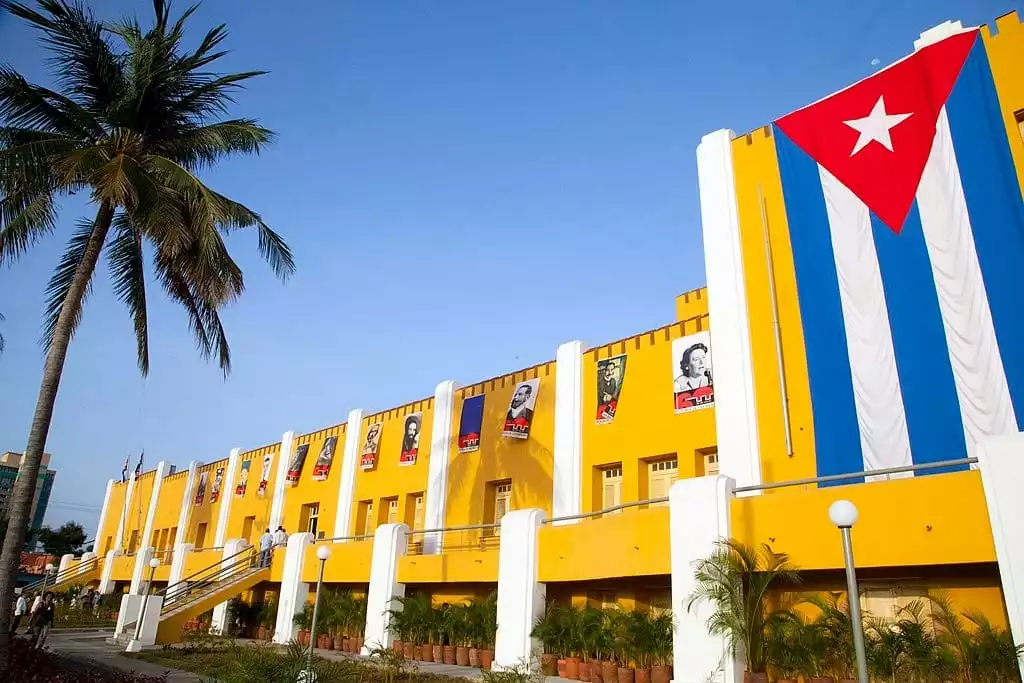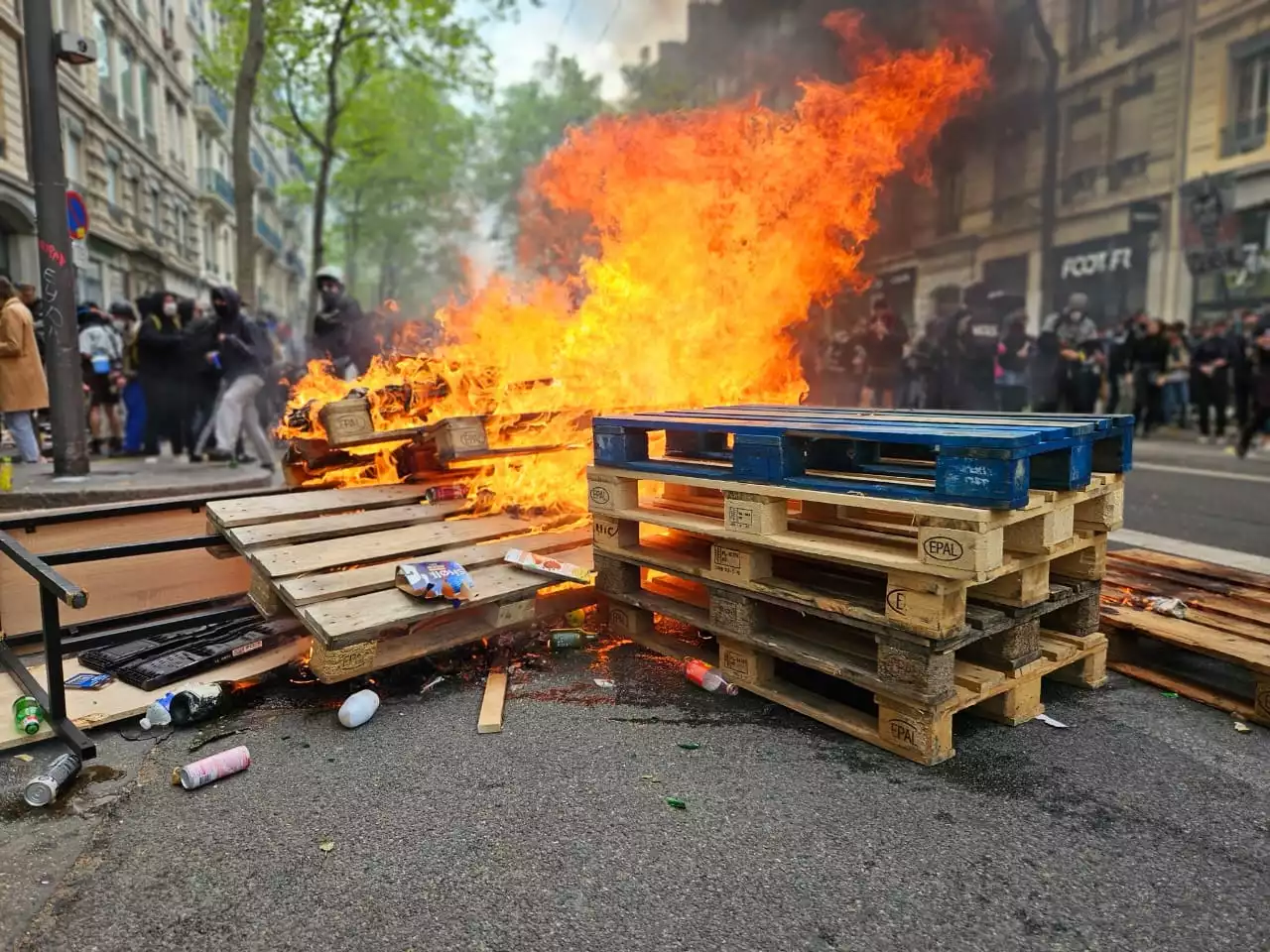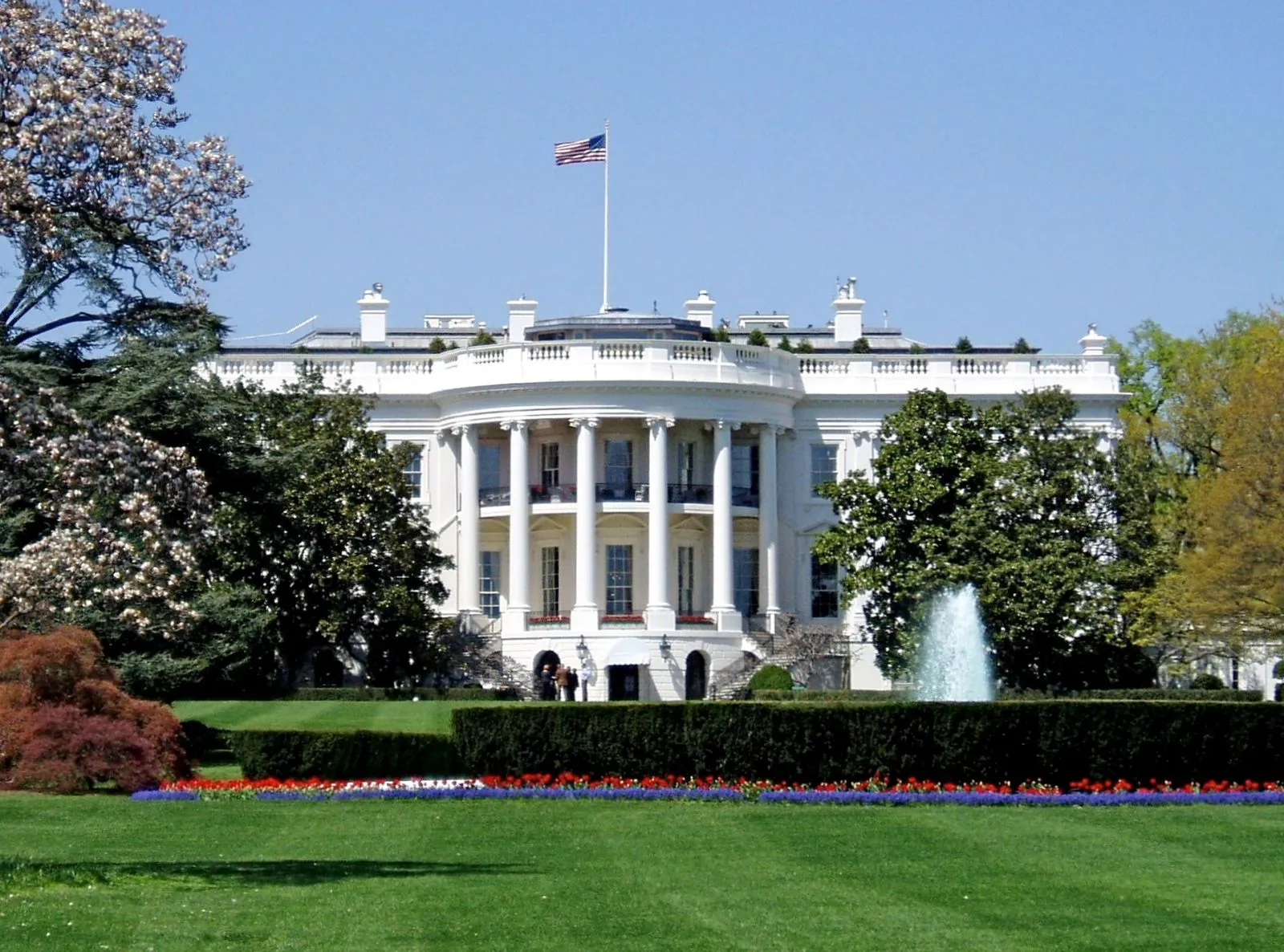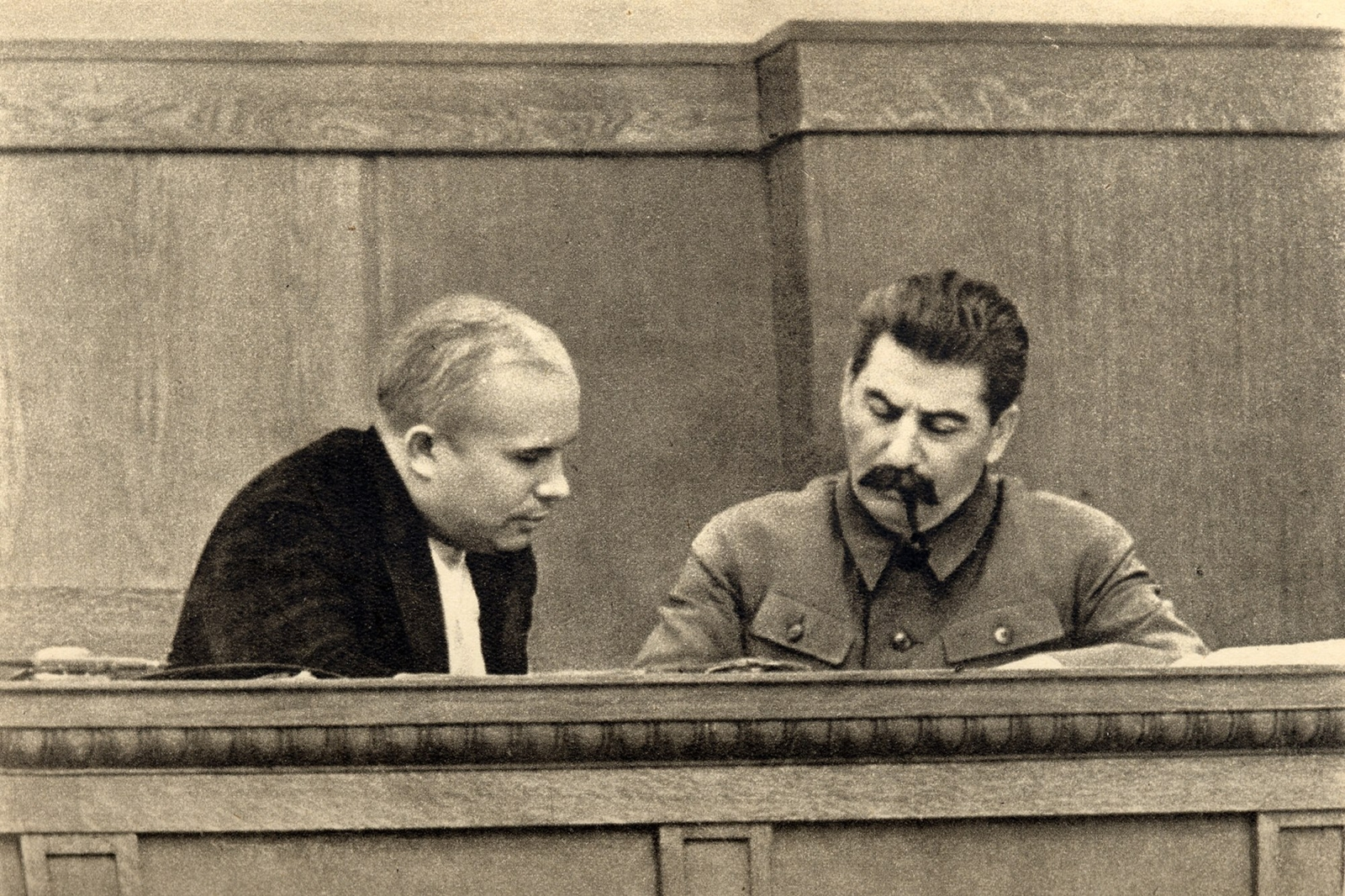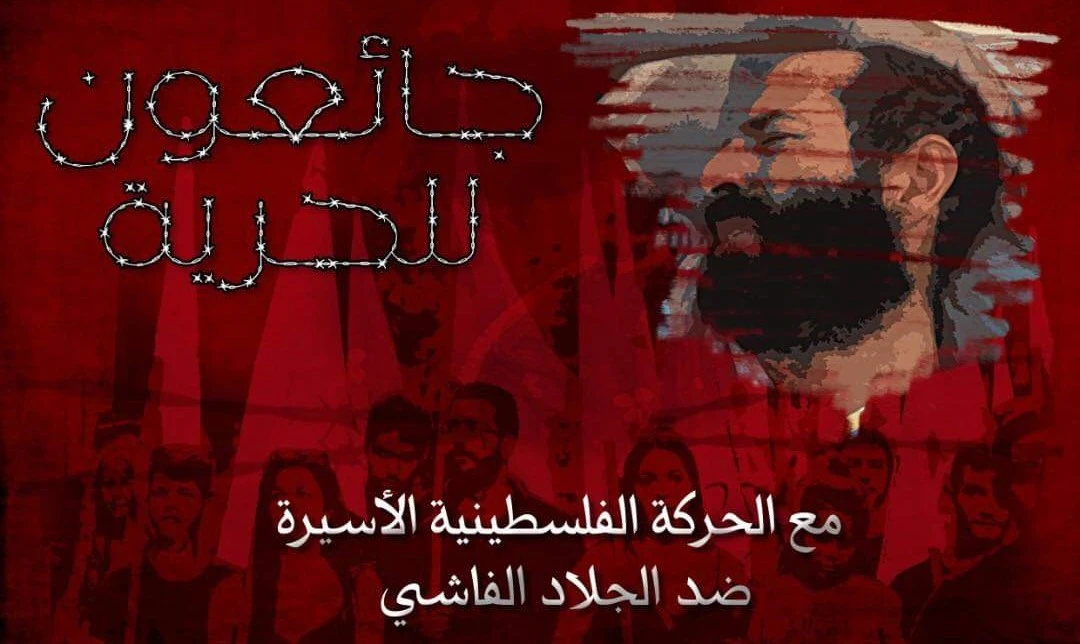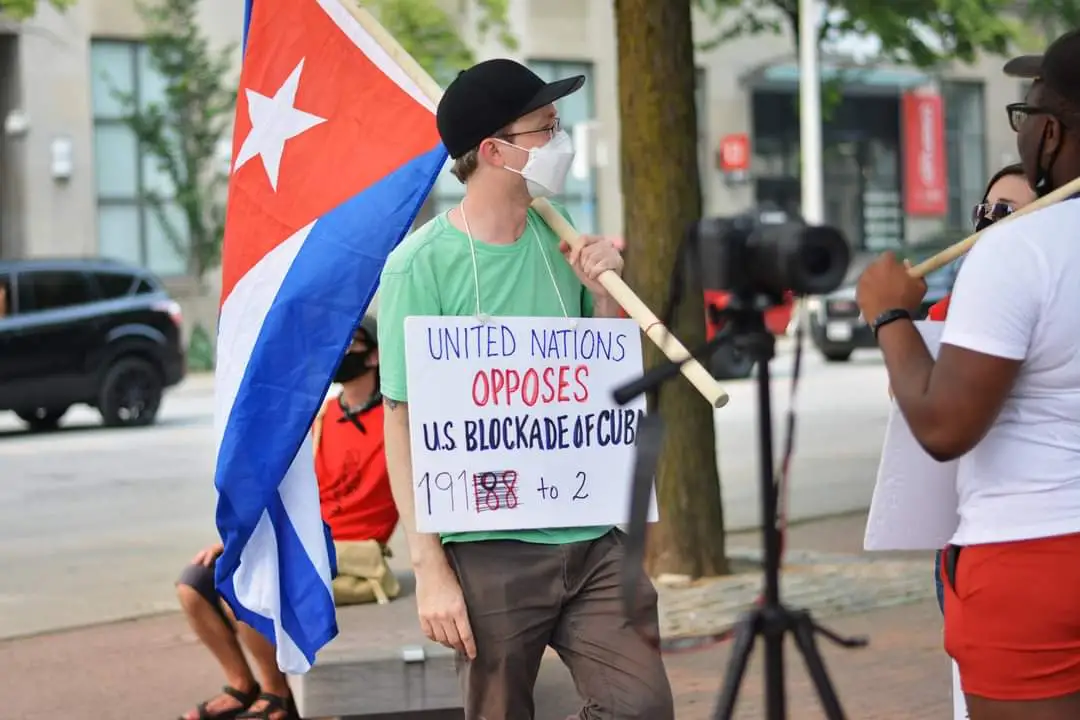Guerrilla warfare is the first schooling before the creation of an armed revolutionary army. It is not the numbers of the guerrilla fighters that are the most significant in the beginning in fighting an adversarial force, but the political, social and economic resources that an embryonic guerrilla army can marshal to its side. This will determine the outcome of whether that guerrilla force will be able to contain, nurture and expand on every level. This is none other than a people’s army waging a War of Liberation. Guerrilla warfare is the deadliest of all the frictions of war. The war waged by the people’s army is a war waged for its very existence, and there is generally no quarter given to a guerrilla force that ultimately does not have the moral and material support of the very people it is attempting to emancipate from the yoke of the oppressor.
In the modern sense, the capitalist classes and the imperialistic hegemony that these classes attempt to continually impose not only on their own slave-laboring classes, but those laboring classes outside their domain and geographical boundaries as well. It is with all these various subtleties in mind that we should observe and study what can be learned from the guerrilla war that the Cuban people waged with the youthful and ill-fated assault on the Moncada Barracks on July 26, 1953 and which ended on January 1, 1959 when Batista was driven from the country.
The cities Santa Clara and Santiago de Cuba were seized by guerrilla revolutionaries, Fidel Castro, Raúl Castro, Huber Matos, and Che Guevara. However, Fidel’s guerrilla fighters not only had to wage a brutal insurgency against their own decadent and aggressive government, they also had to create the foundation of their own guerrilla army. According to one historian, “The idea of the small guerrilla force destroying a large modern army was enshrined in the faco theory developed in the 1960’s”. It was also understood that “while the rebel army was lauded for its military victories over an enemy with overwhelming numerical superiority, its success was attributed to the fact that it welded the moral force of the people. The concept of the guerrilla as the instrument of the people, however, underwent some modification with Fidel’s commitment to Marxism-Leninism.” I believe it is a combination of all of the above factors that brings success, but that the core concept of the Cuban guerrilla army developed out of a long process of deep political struggle before armed struggle became an actual reality.
BUILDING A POLITICAL BASE DURING
THE CREATION OF A GUERRILLA FORCE
In order for a guerrilla movement to have any opportunity for success, it must be part of a leadership of a revolutionary, populist or progressive political party whose platform is sensitive to the people’s needs in a repressive society. Without such a political mandate, a guerrilla movement cannot succeed in any formidable way. Fidel Castro Ruz was conscious of these basic principles regarding how to flourish within a political movement or party in order to succeed further with his revolutionary ambitions.
Fidel Castro joined the Partido del Pueblo Cubano which was founded in 1947 by Eduardo Chibás. The progressive politician, Chibás, created the reformist party as a serious response to a Cuban government that was deeply corrupt and in need of social and economic reform. Thus, the main political goals of the Party of the Cuban People-Orthodox, known to the Cuban masses as Partido Orthodox, were to establish a distinctive national Cuban identity (which was not tied to the national identity of the United States which in effect controlled the Cuban island), to assert a vibrant economic independence and to implement vast social reforms. As I noted previously the law student, Fidel Castro was a robust active member of the PPC-O in the late 1940s and early 1950s. He intended to run as a PPC-O candidate for the Cuban parliament prior to the coup by Batista.
During the 1950 mid-term elections, Roberto Agramonte, a member of the Orthodoxos, was the favorite to win, but Fulgencio Batista sensing that he could not maintain the power he craved, staged a coup almost three months before the election. Batista’s political aim and decisive ambition was to work with the American Mafia who controlled the drug, gambling, and prostitution businesses in Havana and with large U.S.-based multi-national companies who were awarded lucrative contracts. It was during this period that the PPC-O was in a search for deeper revolutionary instruction. The left-wing of the PPC-O was most influential on the party's youth wing, the Orthodox Youth (Juventud Ortodoxa).
In 1948, during this intense period of political struggle, a unique pamphlet by the Orthodox Youth aligned itself with a Marxist-inspired, democratic socialist platform, but it was also critical of the Soviet-aligned Popular Socialist Party, which upheld Marxism–Leninism. These dialectical struggles only heightened the grievances among the Cuban student movement of that period and brought more unrest to the Cuban working class and economic groups who were embittered by lack of employment and lack of a healthy overall standard of living.
THE ATTACK ON MONCADA BARRACKS: A FLAWED BUT CREATIVE GUERRILLA ATTACK
Fidel Castro Ruz became a lawyer for the working class and poor within the city of Havana. His brother, Raúl Modesto Castro Ruz, became a member of the Socialist Youth, an affiliate of the Soviet-oriented Cuban Communist Party, Partido Socialista Popular (PSP). Raul was feverishly committed to fight a political war against the Batista regime. Many of Fidel Castro's followers were Partido Orthodoxo Youth of the lower middle class and working classes, but there were also student intellectuals that were a part of the guerrilla cell.
On the dawn of July 26, 1953, Fidel Castro led an army of 136 personally trained guerilla fighters in an attack on Moncada Barracks. The siege occurred after a year of planning and was triggered by the Cuban dictator Fulgencio Batista’s military coup. An insufficiency of weapons and lapses in communication foiled the attack as well as a lack of professional military education and instruction regarding the detailed working that must be a part of any guerrilla force with serious intentions to challenge a large military army. It should be observed here that there was a latent military leadership that would emerge after the tragically failed assault on the army barracks, and that was in the guise of Raúl Castro who was a committed socialist. Both of the brothers participated actively in sometimes violent student actions which revealed their sincere opposition to the repressive regime of Batista. However, sincerity and even enthusiasm is not enough to maintain a cohesive and professional, revolutionary guerrilla force.
Briefly, let us analyze the guerrilla attack upon Moncada Barracks. The guerilla group consisted of a 16-automobile caravan in order to give the appearance of a military delegation headed by a high-ranking army officer sent from western Cuba.
The initial plan was that a group of 25 guerrillas led by Abel Santamaría would take the civilian hospital near the rear of the barracks, while a second group of 6 men led by Lester Rodriguez, including Raúl Castro, would take physical control of the Audiencia Building (Palacio de Justicia); a third group of 90 men, led by Fidel Castro, would take the barracks itself.
It was in essence a three-pronged attack that did not take into consideration their attire or the caravan with no military insignias to speak of in order to deceive the military personnel guarding the barracks. Another major factor was that there were at least a thousand military personnel there. It should be a maxim that with a small guerrilla force one should never attack another adversary with numerical superiority. Attack with complete surprise and attack when it is favorable to win, and do not attack otherwise.
The auto caravan became separated by the time it arrived at the barracks, and the cohesion of the three-pronged attack was lost. Further, the vehicle carrying the guerillas' heavy weapons got lost. This loss of weapons in the end meant that a number of the rebels who would have taken part in the attack were left behind and were not able to participate. In Fidel Castro's autobiography, he states that he drove his car into a group of soldiers at the gate who had realized an attack was in progress. The guerrilla force in the cars behind him jumped out of the other cars, believing they were inside the barracks’ perimeter, and the vocal alarm by soldiers outside the barracks was sounded before the barracks had even been attacked. According to Castro, this was the fatal mistake in the operation, but more primary sources are needed to justify that these were the only causes of defeat at Moncada Barracks. I would state that it was a combination of many military factors that he, as well as the other planners of the attack, failed to understand in their youthfulness and carelessness. The loss of life was high. Those guerrillas who were captured were tortured in the most abusive ways and many of them were executed.
Here, I think it would be instructive to quote the words of Vo Nguyen Giap who become the main Vietnamese general in leading the North Vietnamese to ultimate victory over the French and then the American invader. What
General Giap had to say about forming a guerrilla force was mature and keenly intelligent. He helped to form an insurgent movement as a young communist after he gave up his work as a history teacher at the Thăng Long School in Hanoi:
“We stayed on another day to assess the situation and draw up an all-sided plan for the formation of the future army. We reviewed the situation of the enemy, our own situation, the strength of our cadres, the problem of food supply, the regions in which the strength in which our guerrilla bases were to be expanded first, and so on… By mid-December 1944, on the eve of the founding of the Propaganda and Liberation Unit, I received Uncle’s (Ho Chi Minh) instructions…. Two days after the founding of the unit, we started our activities and won the first victories at Phai Khat and Na Nagan. The two sudden attacks against the Phai Khat and Na Nagan posts, were resulted in their being annihilated, were swift and victory operations.”
What is most important here is the choice to assess the situation, review the “situation of the enemy” and finally to make a swift attack with the concept of the annihilation of the enemy in mind. Total destruction of the enemy is one of the main lessons to be learned in guerrilla warfare, but beyond that the pioneering Soviet military theorist, G.S. Isserson wrote “It’s perfectly obvious that along the new paths in the evolution of our operational art it is necessary, first of all, to proceed from the nature of our future war as a revolutionary-class war”. In other words, the attack by Cuban guerrilla fighters on Moncada Barracks, although a failed and not completely thought out attack, in terms of detailed strategy and tactical operation, was a profound act of war. As the great military theorist, Clausewitz would say on this subject whether it be an insurgent force or a conventional army force intent upon on war “We say therefore that war belongs not to the province of the arts and sciences but to that of social existence”. The vital and historical attack by the young Cuban insurgents was their struggle for the Cuban peoples’ social existence based on human integrity and political self-esteem.
The attack on the Moncada Barracks was ill-conceived and not thought out with prudence and overall detail. However, out of the insurgency defeat came the July 26th Movement which brought about in the years to come, a deeper understanding of guerrilla warfare by its charismatic and politically astute leaders. The lack of critical thinking from every perspective in a guerrilla operation can lead to disaster. However, after a period of imprisonment and eventual exile, it is apparent that when Fidel Castro and his guerrilla fighters came out of Mexico, after purchasing the decrepit yacht Granma, on 25 November 1956, and Castro set sail from Tuxpan, Veracruz, with 81 armed revolutionaries, the beginning of the actual maturity of modern Cuban guerrilla warfare was taking place. The guerrilla war against the Batista regime would begin in earnest and create a modern guerrilla template for other guerrilla fighters in other countries to emulate in their national wars for Self-Determination and Independence.
THE ART OF CUBAN GUERRILA WAR AND ITS MATURITY
The beginning of an actual, formidable Cuban guerrilla force was brought about by The 26th of July Movement which Fidel Castro personally formed as a revolutionary force. The name originated from the failed attack on the Moncada Barracks on July 26, 1953. After being released from prison for his involvement in the failed attack on Moncada Barracks, Fidel Castro traveled to Mexico City where he set about the task of reorganizing the guerrilla force movement in 1955 with several other exiled revolutionaries. Castro’s early guerrilla leadership would include Raúl Castro, Camilo Cienfuegos, and Juan Almeida Bosque, and their main military objective was to form a cohesive disciplined guerrilla force that would be capable of overthrowing and destroying the Batista regime. However, to achieve such a correct strategy they would have to involve other political groups that were within the urban areas of Cuba, more specifically Havana. Therefore, Castro, being the pragmatist that he was as a lawyer and politician, he allied The 26th of July Movement, later known as M-26-7, with the Orthodox Youth, the National Revolutionary Action led by the charismatic Frank País and the other formidable political revolutionary party, the National Revolutionary Movement led by Rafael García Bárcena. All the various men and women were diverse in their class backgrounds. What they did have in common was their zeal and youthful agitation to bring down the Batista regime as the majority of them were Cuban nationalists, and therefore Cuban patriots.
Even as Castro was able to bring a deep unification among the various revolutionary parties and organizations who were politically and violently opposed to the Batista regime, he knew what was also needed was professional military instruction on how to implement guerrilla warfare within the M-26-7 Movement. For that, he turned his attention to seeking out a former Spanish Civil War Lt. Colonel by the name of Alberto Bayo. Although Lt. Col. Bayo did not see active duty at the front in Spain, the Spanish Republic military apparatus did place him in command of preparing a guerrilla column in the Sierra de Madrid. In the end, the project was not carried out and Bayo spent most of the contest as a military attaché in the Ministry of War. After the completion of his military duties in Spain during the Spanish Civil War, Lt Col. Bayo became an instructor at the Military Academy of Guadalajara. During the middle of the 1950’s, Bayo would have personal contact in Mexico with prominent Latin American revolutionaries, including Fidel Castro and the adventurous and temperamental Ernesto Che Guevara. It is reported that he became a mentor to both of them. Eventually, Bayo joined the guerrillas as a military advisor and participated in the military organization of the Cuban revolution. Lt. Col Alberto Bayo was able to give a sense of sober and serious direction to the overall combat readiness of the M-26-7 guerrilla fighters. They had powerful political will, but lacked proper education in the art of war. They also did not understand the significance of guerrilla warfare as a science.
The Spanish author, Alfonso López García, wrote about the significance of Bayo. Although he did not actively fight at the main fronts during the Spanish Civil War, he did counter-espionage work in the form of intelligence gathering in the south of France. He also participated in organizing and working with Spanish guerrillas. As the journalist, García wrote, “The reality is that, although his participation in the conflict was limited, the guerrillas had a brutal later importance. His inspiration served Great Britain and the United States to create their special forces of action, the commandos. Also, when they returned to North America, the members of the Lincoln brigade were recruited to found the OSS, the seed of the CIA. It could be said that the influence of these units was seen in the long term”. Lt. Col Bayo most significance idea about guerrilla warfare was the following:
“Remember that the guerrilla never invites the enemy to fight, every good guerrilla must attack by surprise in skirmishes or ambushes. When the soldiers charge to repel the attack, the guerrillas must disappear.”

Although Lt. Col. Bayo was not a master tactician like Vo Nguyen Giap, he did understand the Clausewitz dictum “We say: surprise lies at the foundation of all undertakings without exception, only in very different degrees, according to the nature of the undertaking and other circumstance”. The element of surprise is the ultimate weapon in attacking an enemy whether it be in guerrilla warfare or in a conventional world war.
THE CUBAN GUERRILLA CAMPAIGN: A CULMINATION OF WAR STAGES
The element of surprise would not be achieved by Castro and his eighty-one guerrillas, when they landed on December 2nd, 1956, at Playa Las Coloradas close to Los Cayuelos which is located near the eastern city of Niquero in Cuba. Upon their landing, the guerillas were met with withering fire from Cuban troops and Cuban Air Force planes. They were, in essence, surrounded, and only nineteen were able to escape into the brush, swamplands and eventually the mountains. The Cuban Air Force and Army knew the guerillas’ landing destination and intentions. The guerilla force leadership was flawed because they did not have a good intelligence network which could have assisted them in remaining undetected. However, there was the achievement of an audacious landing against the Batista regime, and this served the purpose of enabling them to move forward with their tactical operations. Although their military operations were flawed in their initial stages, they achieved a moral victory through their alignment with the will of the Cuban people, despite the heavy loss of life of their comrades. They would eventually be able to gather support from the campesinos and the urban progressive forces that would come to give them support in the mountains. I am aware that without access to Cuban military archives, the narrative of what took place is incomplete.
As the beleaguered guerrilla force of nineteen men moved inland, they headed for the forested mountain range of Oriente's Sierra Maestra, being repeatedly attacked by Batista's troops along the way. It was in the Sierra Maestra mountains, that Castro, his guerrilla leadership and the guerrilla fighters began to conceive of raiding small and isolated army posts to obtain weaponry. It was in January 1957 that the Cuban guerrillas overran the army outpost at La Plata. They treated any soldiers they wounded, but executed Chicho Osorio, the local mayoral (land company overseer), who was despised by the local peasants. It was Osorio's execution which would aid the guerrilla group in gaining the trust of locals, although it should be emphasized that not all the peasants were enthusiastic about the guerrilla force. The Cuban peasant class was conservative and religious, and they were, therefore, mistrustful of the guerrillas because of longstanding class differences.
However, there were those among them who were willing to join the revolutionary insurgents. It was the urban students, union workers and progressive intellectuals in the urban areas of Cuba that would play a vital role in replacing fighters who had already been killed or captured in battle by the Batista forces. The growing guerrilla army would become a numerical force of 200 in July 1957, with Castro dividing his growing army into three columns, commanded by himself, his brother, and Guevara.
The MR-26-7 members operating in urban areas continued agitation and sending supplies to Castro. On February 16, 1957, he met with other senior members to discuss tactics in the ongoing attack on the Batista army forces. Dividing up the guerilla army into three distinct groups was brilliant in concept as it would force Batista’s forces to spread their troops thin in the coming battles.
From a military perspective, Fidel Castro is reminiscent of the great Italian nationalist revolutionary, Giuseppe Maria Garibaldi. Both men learned about the art of guerrilla warfare in exile, Castro in Mexico and Garibaldi in South America. In 1848, Garibaldi returned to his native homeland, Italy. He commanded and fought in military campaigns that eventually led to Italian unification. This was similar to Castro’s return to Cuba in 1956 to wage a war against Batista in which he eventually achieved a victory on the battlefield on January 9, 1959. Castro ultimately became Prime Minster of Cuba. However, this comparison also has its limitations. Although both men were nationalists in political temperament, Castro was influenced by the profound ideology of Marxism Leninism. Garibaldi, in his time, had only ethical socialism, such as was advanced by Henri Saint-Simon, as a political guide. However, Garibaldi did support the uprising of the Paris Commune which erupted in 1871. He joined with younger, revolutionary radicals in declaring his full support for the Communards and internationalism. In that sense, Castro and Garibaldi shared a political commonality. Both Garibaldi and Castro were nationalist leaders. It was their political leadership more so even than their military leadership that set them apart from the more disciplined modern leadership of Vo Nguyen Giap and Mao Zedong.
Castro's guerrillas would increase their attacks on Batista’s army military outposts through the years of 1956 and 1957. This eventually forced the Cuban government to withdraw its troops from the Sierra Maestra regional outposts, and by spring 1958, the guerrilla forces controlled a hospital, schools, a printing press, a slaughterhouse, a land-mine factory and a cigar-making factory. By 1958, Batista was under increasing political pressure as a result of his military failures. He experienced widespread domestic and foreign criticism throughout South America, Western Europe, the Soviet Union and The People’s Republic of China.
He maintained his fraying Havana administration with press censorship, hideous torture of those Cuban citizens who opposed him, and finally extrajudicial executions of the rebellious Cuban civilian population that opposed him. The United States government was now aware of the Cuban guerillas success in the various points of their tactical operations, and was also apprehensive that the Batista regime could not control the civil unrest and the urban guerilla violence in the major cities of Cuba. The U.S. was beginning to see Castro and his guerilla forces as nationalist emancipators against a corrupt regime, naively unaware that communist and socialist ideology was also a part of the guerilla leaderships political values and future aspirations. Cuban nationalism was masking these other values. These other factors along with the growing pressure of anti-Batista sentiment among American citizens, including the more progressive political activists, influenced the U.S. government to cease supplying the Batista regime with weaponry.
The opposition parties in Cuba called for a general strike accompanied by armed attacks from the MR-26-7. Beginning on April 9, it received strong support in central and eastern Cuba. The Batista regime in order to stabilize their loss of the Sierra Maestra region created a military plan, Operation Verano, for an all-out-attack against the Castro guerrilla force. The Cuban army would be aerially bombarded in the forested areas and villages suspected of aiding the spread-out insurgent guerrilla force. Ten thousand soldiers commanded by General Eulogio Cantillo surrounded the Sierra Maestra, pushing the rebel encampments north in order to entrap them. However, although the military strategic concept was rational and well-planned, what Batista and his generals lacked was an in-depth knowledge of guerrilla warfare. Therefore, despite their advantage numerically, technologically, and in military hardware superiority, the Cuban Army found itself unable to handle the popular Cuban civilian support for the guerrilla force. In addition to this, soldiers from the Cuban Army were defecting to the guerrilla insurgent side. In the summer of 1958, the MR-26-7 vanguard forces went on the offensive, pushing the Cuban Army out of the mountainous regions. Castro used his three guerrilla columns in a pincer movement to surround the main army concentrated in Santiago. By November, Castro's forces controlled most of Oriente and Las Villas, and divided Cuba in two by closing major roads and rail lines, thus destroying the numerical and technological military advantage of the Cuban Army. It was the pincer movement along with the rebellions in the various Cuban cities that dealt the most severe military blows to the dispirited Cuban Army.
The issue of numerical superiority against an adversary and the disadvantages of having less troops than the enemy in an attack is complex. In relationship to the MR-26-7 guerrilla forces and the other various guerrilla forces that fought both in the urban areas and in the mountainous regions of Cuba, a historian researcher noted the following:
To support the contention that only a handful of dedicated guerrilleros were necessary to bring off a revolution, Fidel pointed to the experience of his own forces in Cuba. He emphasized the disparity in numbers between his forces and those of the Batista government. The final victory was won, Fidel told Lee Lockwood in 1966, with approximately 3,000 guerrillas, lessthan half the number he had reported to Dickey Chapelle in 1959 (Table I, Items 6 and 7). Still, the lower of Fidel’s figures is higher than those usually given by anti-Castro Cubans and by Anglo-American academics.
An analysis of the guerrilla war force both in its initial and in its final stages right up to the defeat of the adversary should be based on the quantitative numbers of both forces, the battlefield conditions and on the qualitative military experience of the enemy forces. The number of troops in terms of superiority in a conventional war is far more important than the numbers of a guerrilla force whose battles are usually short in duration and fueled by surprise attacks against an unsuspecting enemy. However, as the guerrilla forces increase in size, then numerical superiority becomes the decisive factor in wielding the coup de grace. The guerrilla force should maintain the deceptive nature of being everywhere and nowhere, of being seen as strong in numbers or feigning only a group of small irregular forces, but always spawning like fish in streams entering into the sea.
In the final stage of the guerrilla war against the Batista regime and its demoralized army, it became apparent to the international community that the great majority of the Cuban people had turned against the regime and supported a government that would meet their needs. The various political intrigues between the political groups fighting for dominance would be a laborious duel amongst the right-wing or conservative nationalist Cuban class, the moderate, progressive Cuban middle class, and the Cuban working class. The Cuban Communist Party people had the support of the majority of the Afro-Cuban people. E. T. Smith, the American Ambassador to Cuba, knew that a clandestine CIA mission had come too close to the MR-26-7 movement. The ambassador met with President Batista personally and informed him that the US would no longer support him.
It was at this moment of crisis within the Batista government that General Cantillo secretly agreed to a ceasefire with Castro, promising that Batista would be tried as a war criminal. However, Batista was given ample warning about his imminent arrest and fled from Cuba to Spain. Cantillo, being a political opportunist, audaciously entered Havana's Presidential Palace, proclaiming the Supreme Court judge Carlos Piedra to be president, and began the task of creating a new government. Castro had an intelligence apparatus operating within the newly forming government. He was aware of the general’s machinations, and Cantillo was arrested.
With the complete disintegration of Batista's former government and army on January 1, 1959, Castro ordered the MR-26-7 to prevent widespread looting and vandalism and to take control of the streets of Havana as well as in the other major cities throughout Cuba. Cienfuegos and Guevara led their columns into Havana on January 2 while Castro entered Santiago. Castro gave a speech invoking the wars of independence. M-26-7 was now a part of that history. Its surviving guerrillas and its fallen men and women both in the rural and urban areas of Cuba would be a part of that historical legacy of Cuba.
THE CUBAN GUERRILA FORCE AS A PEOPLE’S ARMY
The greatness of the Cuban guerrilla force which defeated the Batista regime’s Cuban Army was not won by professional, correct strategy and tactics. There were many blunders and defeats along the way. What brought about their complete and final victory was the fact that the guerrilla force was an army created and supported by the various classes, and therefore was, in essence, a People’s Army. It was not an anti-imperialist war like that which took place during the French colonialization and occupation of Vietnam. It was not a war against the invader, that being the American armed forces during what is known by the Vietnamese as The American War. It was, nonetheless, a national War of Liberation, and the Castro guerrilla forces fall into that grand and monumental legacy of wars of liberation. Even if the various Cuban revolutionary leaders were influenced by the guerrilla tactics of Mao Zedong, the Cuban guerrilla war was not one of creating a peasant revolt. It was the pragmatic creation of both a rural and urban uprising. If there is criticism to be made it is that the leadership could be impulsive and unskilled in the detailed planning of tactical operations. In addition, having an intelligence network could have given them vital information on the various operational positions of the Cuban army in the field and on those who were sequestered in the barracks. Although, I do not agree with a positional paper on this matter called “From China to Cuba: Guerilla Warfare as a Mechanism for Mobilizing Resources”, one part of the work is worth quoting because of its succent observation of the subject at hand:
The cornerstone of both revolutionary theories is that popular forces can win a war against a superior army. This of course is a testament to the power of guerilla warfare when supported by the masses. This form of violence became the primary mechanism for mobilizing resources and undermining the moral authority of the actor in power.
The author above makes the mistake of stating that the Cuban guerrilla forces relied on a Cuban peasant war which was not the case. The urban Cuban working class, the poorer lower classes and especially the repressed Afro-Cuban people all played their roles in striking out against the Batista regime through various political platforms and clandestine violence against the Cuban state. In stating my own position on the circumstances of the Cuban guerrilla force and its ultimate development, I am reminded of what General Giap wrote about the War of Liberation he helped to lead against the French and American armies by stating unequivocally:
They try to explain this extraordinary fact by the correctness of strategy and tactics, by the forms of combat and the heroism of the Vietnam People’s Army. Of course all these factors contributed to the happy outcome of the resistance. But if the question is put: “Why were the Vietnamese people able to win?’ the most precise and most complete answer must be: “The Vietnamese people won because their war of liberation was a people’s war.
In a classical conventional war, those who died on the battlefield, at sea or in air combat flights are remembered with their names in the thousands engraved on granite stone, marble walls or on monumental war columns. For the thousands of guerrillas who lost their lives in the jungles, countryside or urban areas, their names are rarely recorded in public places, let alone in military records, due to the vast number of dead unaccounted for and those listed as “missing in action”. Why does such a lack of memorialization take place? In a People’s War, it is ultimately the total citizenship and its revolutionary forces that give themselves up to a War of Liberation, like that which took place in Cuba beginning in 1956. The act of armed insurgency, the actions of a collective revolutionary guerrilla force, which eventually becomes a People’s Army, is an act of moral virtue and strict discipline which is maintained as a whole by the deep enthusiasm of people. This is the ultimate guiding force for any army that has its strongest bond with its citizens desiring a certain victory.
In my final analysis of the study of Cuban guerrilla warfare, it is important to see its value in current modern military operations, such as in the Ukrainian – Russia War. It is my observation that a modern, conventional army can work side by side with a major guerrilla force or a people’s partisan movement. There could be the creation of a Ukrainian partisan movement supported by the Russian Army or as it is also known by its official name The Armed Forces of the Russian Federation (Russian: Вооружённые Си́лы Росси́йской Федера́ции, Vooružjonnyje Síly Rossíjskoj Federácii). Such a guerrilla or Ukrainian partisan movement is the logical next step in the overall military operations against the Ukrainian government, which is in fact a corrupt, right-wing regime that is basically controlled by the United States Government along with the full support of NATO. Thus, it is an axis military machine which has no desire for peace, but instead wages war against Russia. It, thereby, masks its more insidious and dangerous intentions: to destroy and dismember Russia completely and to annihilate Russia as a nation-state and as a people. To achieve what I would term a Ukrainian People’s Army would require a resolved steadfastness in the mobilization of Ukrainian guerrillas to harass and destroy the Azov forces along with elements of the Ukrainian Army. As the American military historian David M. Glantz and Harold S. Orenstein wrote about the preparations for the Battle of Ukraine by the Red Army in 1944, during the Korsun’-Shevchenkovskii Offensive:
During the preparatory period of the operation it was necessary for the 2nd Ukrainian Front’s forces and headquarters to obtain detailed information about the enemy defense, resolve on theterrain all questions regarding co-operation, work out questions of co-operation with neighboring units… It was essential that the strictest maskirovka be maintained in the concentration regions…
A Ukrainian guerrilla force would be similar to its previous military history, a combination of Ukrainian conventional and partisan forces during World War II. A strict disciplinary force would be required, one capable of securing detailed and factual information about the neo-Nazi Ukrainian forces. Extensive understanding of and coordination with the operations of the Russian Armed Forces would be ideal as well as always maintaining the deepest maskirovka possible regarding their own clandestine military operations. This is, of course, purely military theory. It should also be remembered that the following occurred before the first initial Ukrainian partisan activity took place:
On 29 June 1941, as the Belorussian capital of Minsk was being surrounded, the Party’s Central Committee and the Council of People’s Commissars (Sovnarkom) issued a joint decree to Party and government organizations in frontline regions to form partisan units in the enemy’s rear area… to undertake a long-range partisan raid into Ukraine, always a risky and potentially very costly operation.
As it was with the Cuban guerrilla forces in their initial forays into the mountains, so it is with any kind of guerrilla and partisan forces who will have to undergo battles and hardships with courage and determination. As Thucydides wrote, “The bravest are surely those who have the clearest vision of what is before them…and…go out to meet it”. It takes courage to be a guerilla fighter, and to have the courage that Thucydides wrote about for all time.
Editor's Note:
The views and informations expressed in the article are solely those of the author and may or may not reflect the views of The International. We believe in providing a platform for a range of viewpoints from the left.
